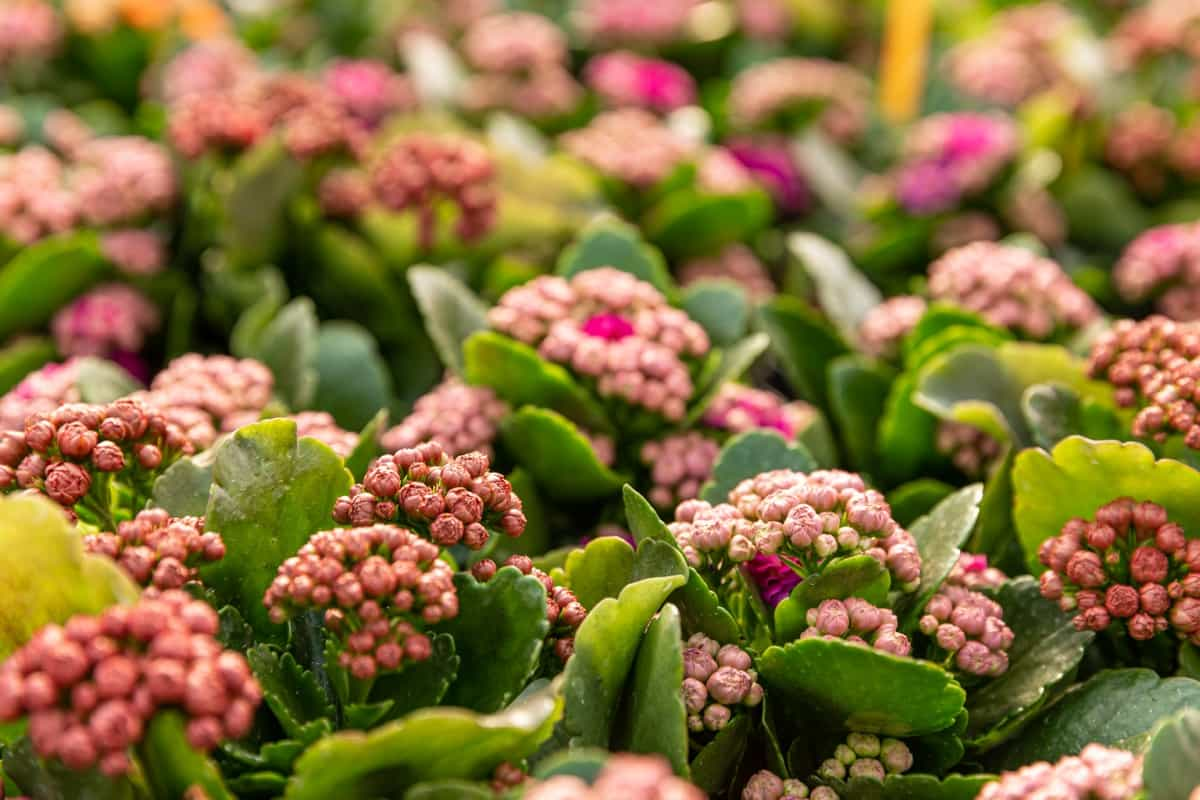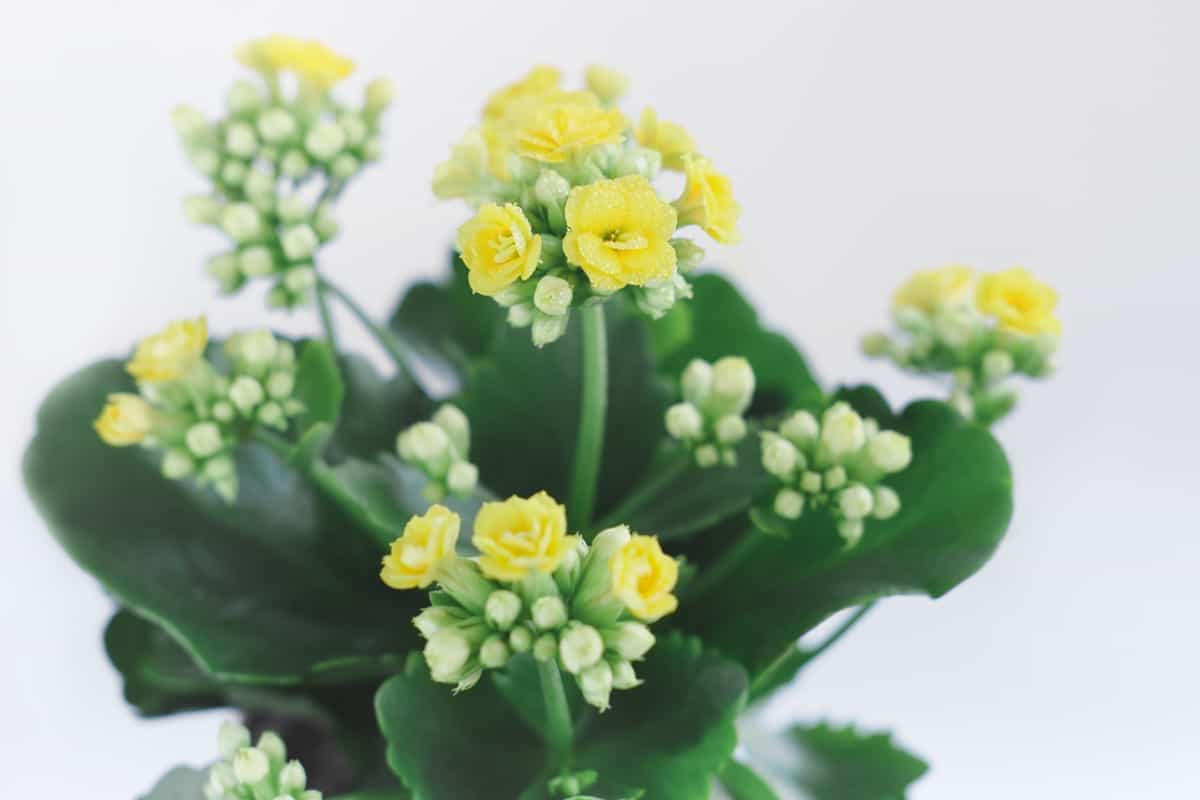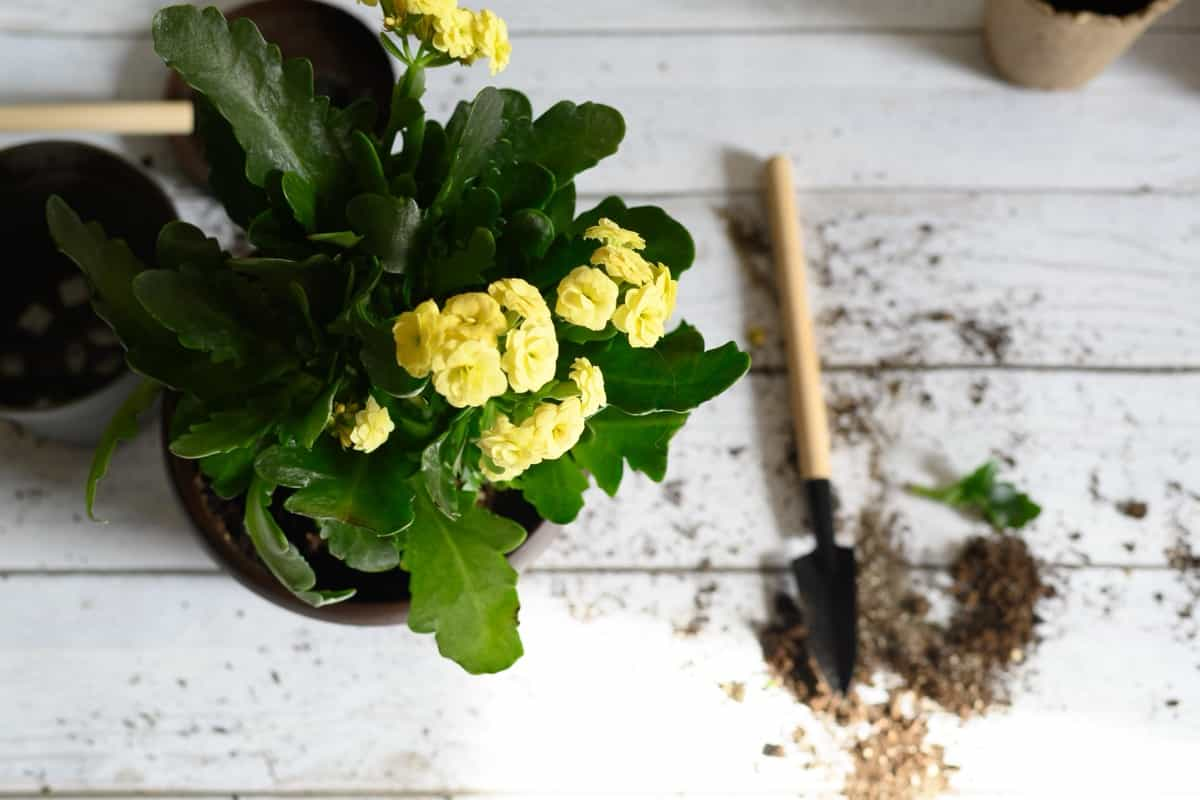This beautiful succulent belongs to the genus Kalanchoe, consisting of approximately 120 different species that are part of the stonecrop family (Crassulaceae). Among these species, one particularly popular variety is the Kalanchoe blossfeldiana, known for its stunning blooms in a range of colors from vivid reds to soft pinks. The process of making your Kalanchoe bushy involves specific care techniques that can help promote healthy growth and lush foliage.

How to Make Kalanchoe Bushy
Select the Right Location
Bright, Indirect Light
Finding the perfect spot for your Kalanchoe is crucial to its bushy growth. Opt for a location that offers bright, indirect light to keep your plant happy and thriving. By providing optimal lighting conditions, you are setting the stage for a lush and vibrant Kalanchoe display in your home or garden. Remember, these succulent plants thrive under specific lighting requirements, so make sure to cater to their needs accordingly.
Avoid Direct Sunlight
Direct sunlight can be too harsh, so it’s best to avoid placing your Kalanchoe in such intense conditions. Consider setting up your Kalanchoe near a window where it can receive natural light without being exposed directly to the sun’s rays. This will mimic its natural habitat and promote healthy growth over time. If you notice any signs of sunburn or wilting, it might be an indication that the light exposure is too strong.
Proper Watering
Check Soil Moisture
Proper watering is key to keeping your Kalanchoe bushy and healthy. Make sure to know the the soil moisture levels by inserting your finger into the growing soil; if it feels dry, it’s time to water. Remember, overwatering the Kalanchoe plant can be just as harmful as underwatering, so finding that balance is essential.
Reduce Watering in Winter
During the winter season, when the Kalanchoe plant goes dormant, reduce watering frequency. The plant’s growth slows down during this time, so it requires less water to thrive. Be mindful not to drown your Kalanchoe in winter – let it rest and conserve its energy for the upcoming growing season. By paying attention to your plant’s watering needs throughout the year, you are setting a solid foundation for lush foliage and vibrant blooms on your Kalanchoe bush.
Pruning
Regular Pruning
Pruning your Kalanchoe plant is essential for promoting bushy growth and maintaining its overall health. Regular pruning helps remove dead or overgrown branches, allowing the Kalanchoe plant to focus its energy on new growth. When Kalanchoe pruning for bushiness, make clean cuts with sharp scissors to avoid damaging the plant.
Deadheading
Deadheading, which involves removing spent flowers, encourages the production of more blooms and prevents seed formation. By regularly deadheading your Kalanchoe, you can shape the plant’s growth pattern and encourage a fuller appearance. Remember not to over-prune, as this can stress the plant – aim to strike a balance between maintenance and allowing natural growth.
Pinching Out
Pinch Tips
The effective way to promote bushiness in your Kalanchoe plant is by using the pinching out technique. By pinching the tips of the stems, you encourage the Kalanchoe plant to branch out and produce more side shoots, resulting in a fuller appearance. Make sure to use clean pruning shears or pinch off the tip with your fingers. This process not only helps control the plant’s size but also stimulates new growth along the stem. By regularly pinching out the tips of your Kalanchoe plant, you can promote a bushier and fuller appearance.
In case you missed it: How to Revive a Dying Kalanchoe in 8 Steps: Care to Bring the Kalanchoe Back to Life

Promote Side Shoots
Side shoots are additional stems that grow from the main stem of the plant, creating a fuller and more vibrant appearance. To encourage the growth of side shoots on your Kalanchoe, regularly prune back any leggy or overgrown branches. This will redirect the plant’s energy towards producing new growth on the sides. Another effective way to promote side shoots is by providing adequate sunlight and proper watering for your Kalanchoe. A healthy and well-nourished plant is more likely to develop strong side shoots that contribute to its overall bushiness.
Fertilizing
Balanced Fertilizer
Fertilizing your Kalanchoe plants is essential for promoting healthy growth and vibrant blooms. Using a balanced fertilizer will provide the necessary nutrients without overloading the plant. When selecting a fertilizer for your Kalanchoe, opt for a well-balanced formula specifically designed for succulents. Look for one with equal parts nitrogen, phosphorus, and potassium to support overall plant health.
Avoid Over-fertilizing
Over-fertilizing can lead to nutrient imbalances, causing root burn and stunted growth. In spring and summer, fertilize your Kalanchoe every 4-6 weeks to encourage robust growth and flowering. To avoid over-fertilizing the Kalanchoe, always follow the instructions on the fertilizer packaging carefully.
Repotting for Growth
Choose the Right Pot Size
A selected pot that is too small can lead to stunted development. On the other hand, a pot that is too large can hold excess moisture, causing root rot. Select a pot that provides enough room for the plant’s roots to spread out comfortably without being cramped. The general rule is to select a pot size larger than its current container. This will allow for proper airflow and drainage, key factors in preventing waterlogged soil.
Well-draining Soil
Using well-draining soil is equally important for the health of your Kalanchoe. Well-draining soil helps prevent water from pooling at the pot bottom, reducing the risk of root rot and fungal diseases. Choose a cactus or succulent mix that contains perlite or sand to improve drainage. This type of soil will also help aerate the roots and ensure proper nutrient uptake by your Kalanchoe plant. Remember, healthy roots mean a healthy plant.
Pest and Disease Management
Regular Inspection
Pest and disease control is crucial to maintain the health and bushiness of your Kalanchoe plant. Regularly inspecting your Kalanchoe plant for any signs of pests or diseases can help you catch issues early on before they escalate. Look out for common pests like aphids, mealybugs, and spider mites that can harm your kalanchoe.
Natural Pest Control
To control pests naturally, you can use methods like spraying water and a mild dish soap mixture to deter insects without harming the plant. Additionally, introducing beneficial insects like ladybugs can help keep pest populations in check. Preventing diseases involves ensuring proper air circulation around the plant by spacing them appropriately. If you notice any signs of disease, such as wilting or discoloration, take action promptly to address it effectively.
Proper Air Circulation
Space for Growth
Proper air circulation plays a significant role in ensuring that your plant stays healthy and vigorous. Make sure to provide enough space around your Kalanchoe plant so that it has room to spread out and receive ample airflow. This will help prevent any stagnant air pockets that could lead to mold or mildew issues.
Avoid Humid Conditions
Avoid placing your Kalanchoe in overly humid conditions, as this can promote harmful bacteria and fungi growth. Instead, aim for a well-ventilated area with moderate humidity levels to keep your plant happy. By prioritizing proper air circulation, you are setting the stage for robust growth and lush foliage on your Kalanchoe bush.
Seasonal Adjustments
Adapt Care Routines
During winter, it’s crucial to adapt to the lower light levels and cooler temperatures. Start by adjusting your watering schedule – reduce frequency to prevent waterlogged soil. Consider moving your Kalanchoe to a warmer spot with more sunlight exposure during the colder months. Keep an eye on any drafts or sudden temperature changes that may harm its growth.
In case you missed it: How to Use Neem Oil on Kalanchoe Plants: Natural Way to Control and Prevent Pests

Winter Care
Winter care also involves monitoring humidity levels in your home. Avoid placing your plant near heaters or vents that can dry out the air excessively. Consider using a humidifier if needed to maintain optimal conditions for your Kalanchoe. Don’t forget about fertilizing during winter – decrease frequency and opt for a balanced formula suitable for dormant periods. Regularly inspecting for pests and diseases is essential, even when growth slows down in winter.
In case you missed it: How to Grow Kalanchoe in 12 Steps: Propagation, Pruning, Care for More Blooms

Conclusion
Creating a bushy Kalanchoe not only adds visual appeal but also ensures the overall health and vitality of the plant. A fuller appearance indicates robust growth, which is essential for long-term sustainability. Additionally, a bushy Kalanchoe can produce more vibrant blooms, enhancing its decorative value. Encouraging Kalanchoe growth is a rewarding journey for plant enthusiasts looking to witness their Kalanchoe bushy and vibrant.
- Feed Your Flock for Less: Top 10 Tips to Save on Chicken Feed
- Ultimate Guide to Ossabaw Island Hog: Breeding, Raising, Diet, and Care
- Hatching Answers: The Top 10 Reasons Your Chickens Aren’t Laying Eggs
- Eggs and Economics: Breaking Down the Cost of Raising Backyard Chickens
- Defend Your Greens: Proven Methods to Keep Iguanas Out of Your Garden
- Ultimate Guide to Cinnamon Queen Chicken: A Comprehensive Guide for Beginners
- Ultimate Guide to California Tan Chicken: Breeding, Raising, Diet, Egg-Production and Care
- Ultimate Guide to Marsh Daisy Chicken: Breeding, Raising, Diet, and Care
- 10 Types of Chicken Farming Businesses You Can Start for Profits